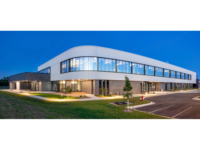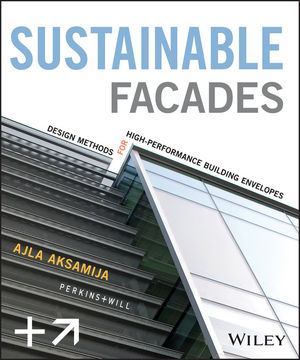Victoria Library is a prototype for what architects at LEO A DALY say is a new concept in library design: the DIP library, short for Digital In-Person. Small by traditional library standards, the 4,300 square-foot Victoria branch prioritizes digital resources in order to maximize space for people-focused functions, such as tutoring, small-group, and classroom-style learning. It provides a limited selection of paper books, while leveraging other branches within the system to provide book delivery on-demand.
“The big idea behind the DIP Library is that intellectual discovery is about people, and the dialogue between them,” said Cindy McCleary, architect with LEO A DALY. “With today’s digital technology, we can facilitate this within a much smaller space than before.”
Victoria Library features a wealth of space-saving digital resources, arranged to enable in-person interaction and group learning.
“The design supports the exchange of ideas and opinions through a combination of group work spaces and digital media. Not just software and databases for research, but a space design that leverages those tools for advancing intellect through group work, debate, dialogue, training, and instruction. It has areas for gaming, wall monitors for mirroring laptops for group work, dual monitor stations for research and tutoring, and a digital makerspace.”
E-books are available for instant download onto personal devices via interactive kiosks. Large, touch-screen monitors allow patrons to flip through books in a rich graphical interface—something McCleary said is essential to the success of a largely digital collection.
“Research supports the cliché that people often choose books based on the cover, the text size—just the overall experience of browsing. With touch-screen kiosks, users can scroll through book jackets just like they’re flipping through books on a shelf. In this interactive environment, they’re more inclined to push ‘download’ and actually access the literature,” McCleary said.
Users can bring their own laptops, tablets, and e-readers, or they can check one out at the Technology Bar, a concierge-style service concept adapted from Apple’s Genius Bar.
“This prototype required us, and the library, to think differently about how staff will serve the space, which led us to the Genius Bar idea,” McCleary said. “Instead of sitting behind a desk waiting to check out books or make recommendations, librarians at Victoria will be trainers, educators, concierges, advisors. Self-checkout stations replace a traditional front desk, which frees librarians to serve patrons directly. It empowers them, and empowers the community to see them as advocates for their intellectual pursuits.”
“The ‘flip’ concept is really about flexible hands-on learning,” McCleary said. “Libraries crave flexibility these days, but have struggled to build in the right flexibility to support changes in information delivery and learning style at the speed of technology. Our goal was to create an environment that is flexible and can ‘flip’ to cater to robust training, interactive group work, small group training, iPad training, or individual digital discovery.”
More space is saved through the use of Flip Spaces, or spaces that can easily switch between different uses. Long, farmhouse-style tables are used in place of the typical bay of desktop computers found in most libraries, allowing use by individuals, small groups, and classes of up to 24 students. The tables are outfitted with power and data connectivity, which patrons can use to share their screen’s contents on the wall-mounted video monitor.
Some things are sacred, however. The children’s area was designed mainly around paper books, under the belief that children learn as much by sight, touch, and feel as they do by reading the words. Though technology is available for them, it is intentionally de-emphasized, McCleary said.
The project was a collaboration between Carver County, who provided the library service, materials, staff, and operates the library space, and the City of Victoria, who provided the building shell—a joint facility that includes the City Hall on the second floor.










Report Abusive Comment